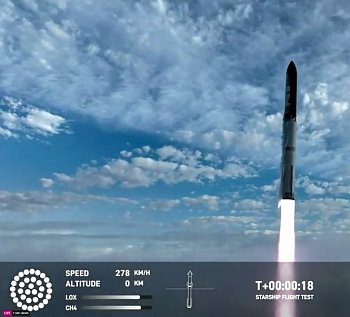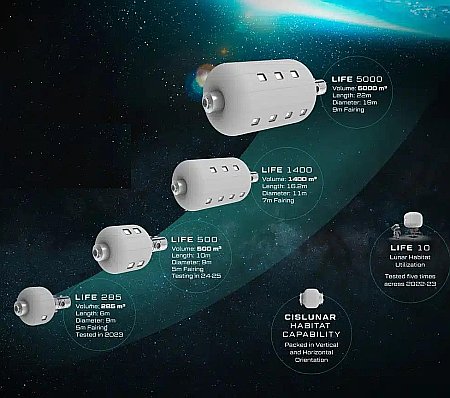Vast announces first two customer payloads on its Haven-1 space station

Vast Haven-1 station inside Falcon-9 fairing
The space station startup Vast today announced the first two customers planning to place payloads on its Haven-1 single module space station, presently scheduled for launch in the second half of 2025.
The company also revealed that these payloads will be installed on the station in what it calls its Haven-1 Lab, which is essentially a variation of the payload rack system used on ISS.
The Haven-1 Lab features 10 Middeck Locker Equivalent payload slots, each roughly the size of a microwave. Each payload slot can weigh up to 30 kg (66 lbs), is provided with 100 W of continuous power, and has access to an Ethernet data connection. Payloads will be operated by the astronaut crew on Haven-1, as well as commanded and monitored by ground operators via Starlink laser links, providing Gigabit/s speed, low latency connectivity. Partners will have the opportunity to return products and samples from space via a SpaceX Dragon spacecraft.
In tandem with Vast’s announcement of its Haven-1 Lab, the company also announced Redwire and Yuri as its inaugural partners, representing some of the foremost experts in the development of microgravity payloads.
Redwire has flown numerous payloards already to ISS, including cutting edge 3D printers. Yuri is less well known, but it appears both it and Redwire are taking advantage of Vast’s much simpler paperwork requirements than NASA’s. Vast has taken no NASA funds, so it can approve payloads at its whim. Speeds things up, saves money, and everyone benefits.
These payloads will likely be part of the first Haven-1 manned mission, where four astronauts will spend 30 days in space, ferried to and from the module using a Dragon capsule and launched almost immediately after Haven-1 is placed in orbit.

Vast Haven-1 station inside Falcon-9 fairing
The space station startup Vast today announced the first two customers planning to place payloads on its Haven-1 single module space station, presently scheduled for launch in the second half of 2025.
The company also revealed that these payloads will be installed on the station in what it calls its Haven-1 Lab, which is essentially a variation of the payload rack system used on ISS.
The Haven-1 Lab features 10 Middeck Locker Equivalent payload slots, each roughly the size of a microwave. Each payload slot can weigh up to 30 kg (66 lbs), is provided with 100 W of continuous power, and has access to an Ethernet data connection. Payloads will be operated by the astronaut crew on Haven-1, as well as commanded and monitored by ground operators via Starlink laser links, providing Gigabit/s speed, low latency connectivity. Partners will have the opportunity to return products and samples from space via a SpaceX Dragon spacecraft.
In tandem with Vast’s announcement of its Haven-1 Lab, the company also announced Redwire and Yuri as its inaugural partners, representing some of the foremost experts in the development of microgravity payloads.
Redwire has flown numerous payloards already to ISS, including cutting edge 3D printers. Yuri is less well known, but it appears both it and Redwire are taking advantage of Vast’s much simpler paperwork requirements than NASA’s. Vast has taken no NASA funds, so it can approve payloads at its whim. Speeds things up, saves money, and everyone benefits.
These payloads will likely be part of the first Haven-1 manned mission, where four astronauts will spend 30 days in space, ferried to and from the module using a Dragon capsule and launched almost immediately after Haven-1 is placed in orbit.




